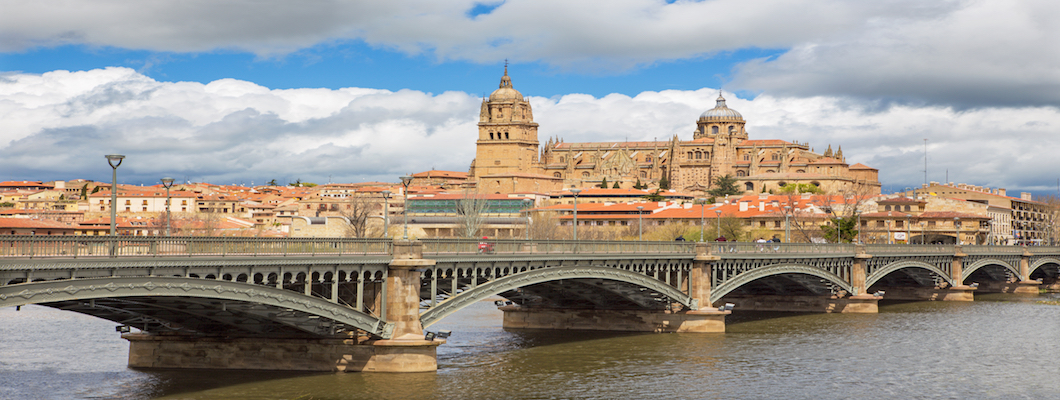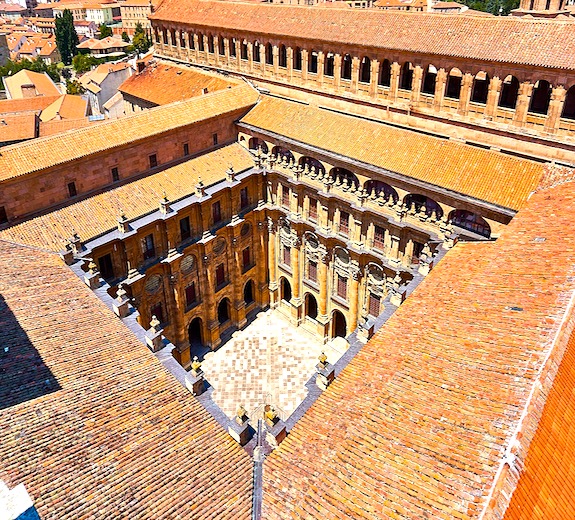Salamanca
 Salamanca is situated to the west of Spain and is the capital city of the province of the same name. Madrid, some 200 km away is the nearest major city and the border with Portugal is a mere 80 km away to the east.
Salamanca is situated to the west of Spain and is the capital city of the province of the same name. Madrid, some 200 km away is the nearest major city and the border with Portugal is a mere 80 km away to the east.
Population
Salamanca Province has a population that is estimated at 200,000 with 40,000 residing in the city itself. Salamanca’s student population makes up 3000 of this number as the University, more than 800 years old, and the oldest in the country draws thousands of Spanish and International students.
The old city was built in Renaissance times when it was known as La Ciudad Dorada or the city of gold, thanks to its buildings constructed from a particular local sandstone with a beautiful golden hue, quarried at Villamayor, a nearby settlement. The old city has been declared a UNESCO World Heritage site.
Built in the 18th Century, the Plaza Mayor is a large square that is possibly one of the most impressive anywhere in Europe. It can hold 20,000 people and was once used as an arena for bullfights. These days, open air music concerts can be enjoyed in the Plaza. Its central position makes it a famous landmark in the city. Nearby is the Central Market of Salamanca which supplies an array of wonderful fresh produce including vegetables, meat and cheese.
The 12th Century cathedral of Salamanca is an awe inspiring sight, and its interior boasts a vaulted ceiling painted with a fresco by Nicolas Florentino. An extension was started in the early 14th Century and the construction went on until 1734 when it was finally complete. This section was built in the Late Gothic style.
The Spanish Civil War Archives (Archivo General de la Guerra Civil Española) can be found in Salamanca, evidence of Franco’s regime of repression and violence towards opposition groups during wartime. Salamanca also has museums that are art based rather than historical, such as the Museum Casa Lis which contains many fine artworks and objects of the Art Nouveau and Art Deco eras.
The festival of Lunes de Aguas, translated as “Water Monday”, occurs in Salamanca shortly after Easter. Its origins are in the long awaited return of the prostitutes serving the city, banished during the holy period of Easter and Lent by the authorities. Today, rather than being a bawdy revel, the day is a time for families to come together and picnic on a delicious spread of traditional food which often includes hornazo, a particularly Salamancan pie.
Photo Credit: Shutterstock Pixabay
